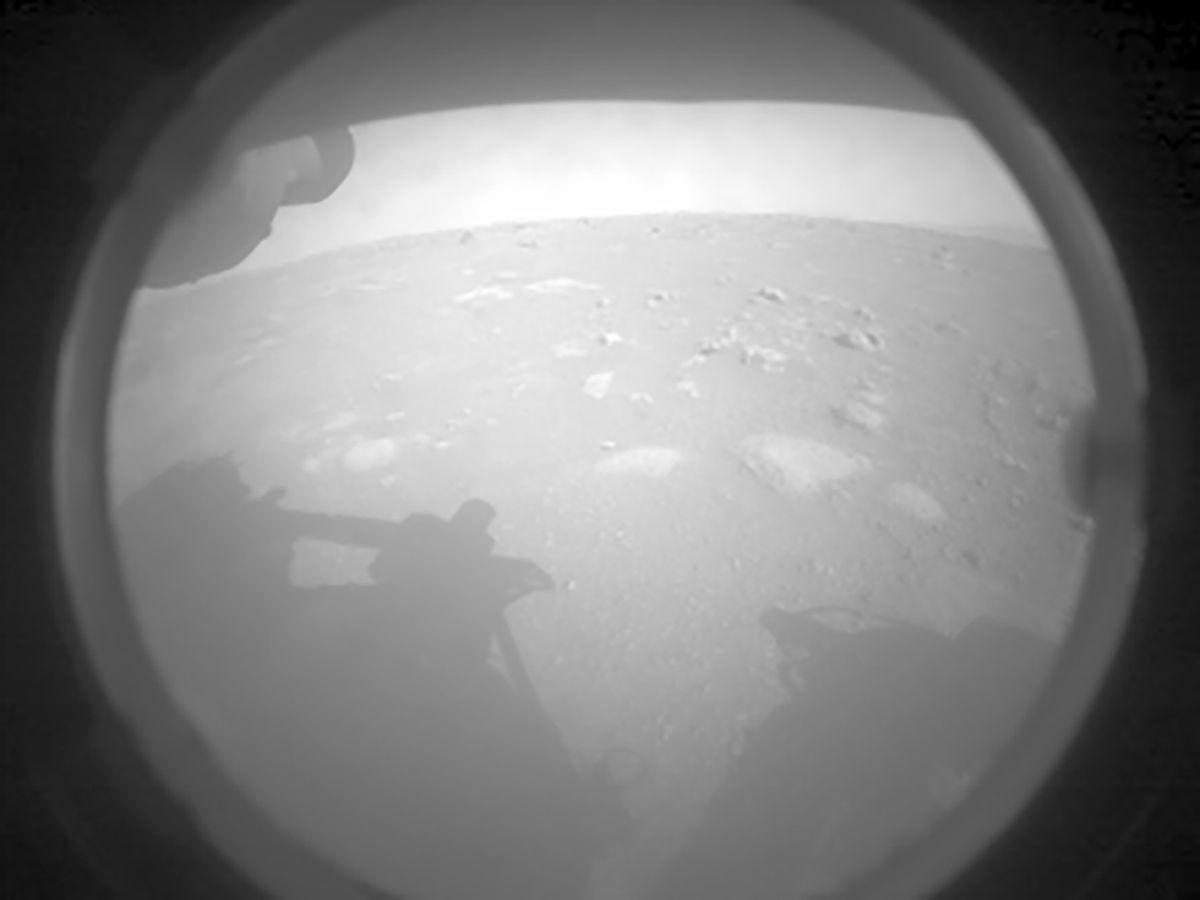Video Friday is your weekly selection of awesome robotics videos, collected by your Automaton bloggers. We’ll also be posting a weekly calendar of upcoming robotics events for the next few months; here's what we have so far (send us your events!):
HRI 2021 – March 8-11, 2021 – [Online Conference]
RoboSoft 2021 – April 12-16, 2021 – [Online Conference]
ICRA 2021 – May 30-5, 2021 – Xi'an, China
Let us know if you have suggestions for next week, and enjoy today's videos.
Hmm, did anything interesting happen in robotics yesterday week?
Obviously, we're going to have tons more on the Mars Rover and Mars Helicopter over the next days, weeks, months, years, and (if JPL's track record has anything to say about it) decades. Meantime, here's what's going to happen over the next day or two:
[ Mars 2020 ]
PLEN hopes you had a happy Valentine's Day!
[ PLEN ]
Unitree dressed up a whole bunch of Laikago quadrupeds to take part in the 2021 Spring Festival Gala in China.
[ Unitree ]
Thanks Xingxing!
Marine iguanas compete for the best nesting sites on the Galapagos Islands. Meanwhile RoboSpy Iguana gets involved in a snot sneezing competition after the marine iguanas return from the sea.
[ Spy in the Wild ]
Tails, it turns out, are useful for almost everything.
[ DART Lab ]
Partnered with MD-TEC, this video demonstrates use of teleoperated robotic arms and virtual reality interface to perform closed suction for self-ventilating tracheostomy patients during COVID -19 outbreak. Use of closed suction is recommended to minimise aerosol generated during this procedure. This robotic method avoids staff exposure to virus to further protect NHS.
[ Extend Robotics ]
Fotokite is a safe, practical way to do local surveillance with a drone.
I just wish they still had a consumer version :(
[ Fotokite ]
How to confuse fish.
[ Harvard ]
Army researchers recently expanded their research area for robotics to a site just north of Baltimore. Earlier this year, Army researchers performed the first fully-autonomous tests onsite using an unmanned ground vehicle test bed platform, which serves as the standard baseline configuration for multiple programmatic efforts within the laboratory. As a means to transition from simulation-based testing, the primary purpose of this test event was to capture relevant data in a live, operationally-relevant environment.
[ Army ]
Flexiv's new RIZON 10 robot hopes you had a happy Valentine's Day!
[ Flexiv ]
Thanks Yunfan!
An inchworm-inspired crawling robot (iCrawl) is a 5 DOF robot with two legs; each with an electromagnetic foot to crawl on the metal pipe surfaces. The robot uses a passive foot-cap underneath an electromagnetic foot, enabling it to be a versatile pipe-crawler. The robot has the ability to crawl on the metal pipes of various curvatures in horizontal and vertical directions. The robot can be used as a new robotic solution to assist close inspection outside the pipelines, thus minimizing downtime in the oil and gas industry.
[ Paper ]
Thanks Poramate!
A short film about Robot Wars from Blender Magazine in 1995.
[ YouTube ]
While modern cameras provide machines with a very well-developed sense of vision, robots still lack such a comprehensive solution for their sense of touch. The talk will present examples of why the sense of touch can prove crucial for a wide range of robotic applications, and a tech demo will introduce a novel sensing technology targeting the next generation of soft robotic skins. The prototype of the tactile sensor developed at ETH Zurich exploits the advances in camera technology to reconstruct the forces applied to a soft membrane. This technology has the potential to revolutionize robotic manipulation, human-robot interaction, and prosthetics.
[ ETHZ ]
Thanks Markus!
Quadrupedal robotics has reached a level of performance and maturity that enables some of the most advanced real-world applications with autonomous mobile robots. Driven by excellent research in academia and industry all around the world, a growing number of platforms with different skills target different applications and markets. We have invited a selection of experts with long-standing experience in this vibrant research area
[ IFRR ]
Thanks Fan!
Since January 2020, more than 300 different robots in over 40 countries have been used to cope with some aspect of the impact of the coronavirus pandemic on society. The majority of these robots have been used to support clinical care and public safety, allowing responders to work safely and to handle the surge in infections. This panel will discuss how robots have been successfully used and what is needed, both in terms of fundamental research and policy, for robotics to be prepared for the future emergencies.
[ IFRR ]
At Skydio, we ship autonomous robots that are flown at scale in complex, unknown environments every day. We’ve invested six years of R&D into handling extreme visual scenarios not typically considered by academia nor encountered by cars, ground robots, or AR applications. Drones are commonly in scenes with few or no semantic priors on the environment and must deftly navigate thin objects, extreme lighting, camera artifacts, motion blur, textureless surfaces, vibrations, dirt, smudges, and fog. These challenges are daunting for classical vision, because photometric signals are simply inconsistent. And yet, there is no ground truth for direct supervision of deep networks. We’ll take a detailed look at these issues and how we’ve tackled them to push the state of the art in visual inertial navigation, obstacle avoidance, rapid trajectory planning. We will also cover the new capabilities on top of our core navigation engine to autonomously map complex scenes and capture all surfaces, by performing real-time 3D reconstruction across multiple flights.
[ UPenn ]
Evan Ackerman is a senior editor at IEEE Spectrum. Since 2007, he has written over 6,000 articles on robotics and technology. He has a degree in Martian geology and is excellent at playing bagpipes.



